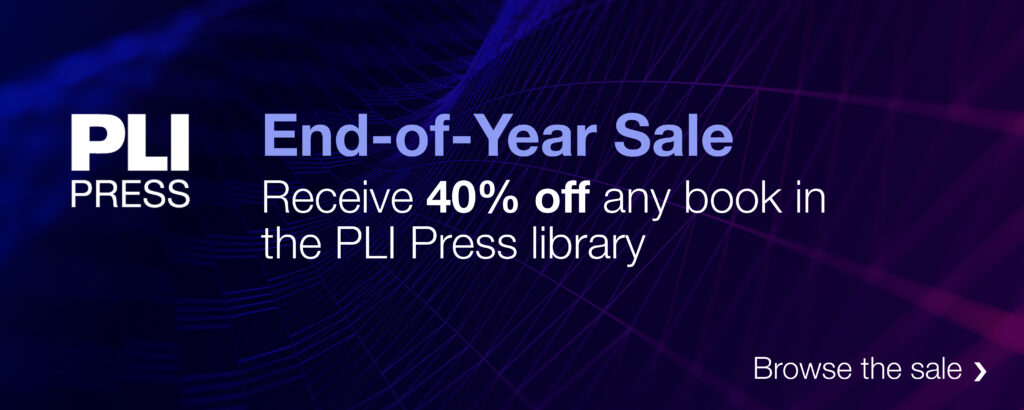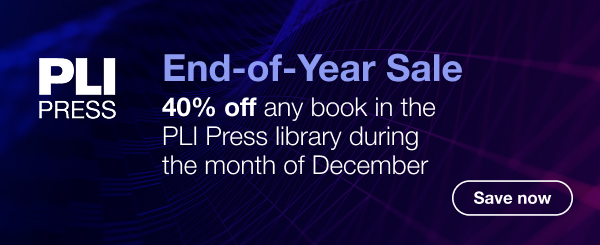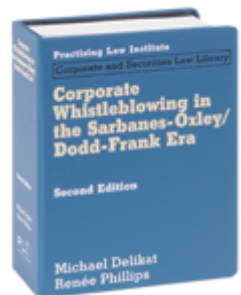
Browse our collection today and save big now through the end of December!

Browse our collection today and save big now through the end of December!

Browse our collection today and save big now through the end of December!

Product Liability Litigation: Current Law, Strategies and Best Practices provides the comprehensive legal, technical, and strategic knowledge that can help maximize an attorney’s ability to prevail in consumer product liability cases. Addressing both plaintiff and defense perspectives, the book covers trends in product claims and defenses, strategies for managing and resolving product litigation, and particular issues and tactics that can arise in different types of product cases.
Highlights from the latest update:
Order a print copy today.
PLI PLUS subscribers can access this title through their subscription.
PLI PLUS offers unlimited electronic access to more than 4,500 downloadable, searchable, and editable legal forms ready for use in your practice. In an effort to highlight this unique content type, we’ve selected one form per month and made it available for anyone to download for free – no subscription required.
October’s free form:
Evidentiary Foundation Questions Samples
More information about Legal Forms & Checklists:
PLI PLUS offers unlimited electronic access to more than 4,500 downloadable, searchable, and editable legal forms ready for use in your practice. In an effort to highlight this unique content type, we’ve selected one form per month and made it available for anyone to download for free – no subscription required.
September’s free form:
Sample Settlement and Release Agreement
More information about Legal Forms & Checklists:
PLI PLUS offers unlimited electronic access to more than 4,500 downloadable, searchable, and editable legal forms ready for use in your practice. In an effort to highlight this unique content type, we’ve selected one form per month and made it available for anyone to download for free – no subscription required.
August’s free form:
Memorandum to Employees Advising Them of Investigation
More information about Legal Forms & Checklists:

PLI Press is proud to announce the publication of the new treatise Multidistrict Litigation.
This brand-new treatise offers a detailed look at how multidistrict litigations (MDLs) work and the decision-making process of the Judicial Panel on Multidistrict Litigation (JPML). With its practical advice and valuable insights, this book is a must-have for lawyers in various fields, including antitrust, labor, patents, product liability, and securities. As MDLs become more common, readers can expect regular updates on the JPML’s latest decisions and analysis of new trends and developments.
Multidistrict Litigation is structured into seven chapters, and seven unique appendices:
Order a print copy today.
PLI PLUS subscribers can access this title through their subscription.
PLI PLUS offers unlimited electronic access to more than 4,500 downloadable, searchable, and editable legal forms ready for use in your practice. In an effort to highlight this unique content type, we’ve selected one form per month and made it available for anyone to download for free – no subscription required.
May’s free form:
Internet Domain Name Purchase Agreement
More information about Legal Forms & Checklists:
Forms & Checklists Flyer – This flyer provides an overview of the forms & checklists on PLI PLUS and highlights a handful of popular examples
Download a PDF flyer of this post to share with colleagues: Most Popular Books on PLI PLUS in 2024. See also the Top 10 Most Downloaded Forms on PLI PLUS in 2024.

Corporate Whistleblowing in the Sarbanes-Oxley/Dodd-Frank Era (Second Edition)dives into the federal and state regulations and agency rules addressing whistleblowers and international investigations. It provides practical advice on minimizing the risk and damage of whistleblower complaints against employers and conducting effective internal investigations. Practitioners and business professionals dealing with SOX Act and Dodd-Frank whistleblower actions will find valuable insights into dynamic case law and evolving rules that shape the rights of whistleblowers and the responsibilities of their employers. Readers will gain thorough coverage of key topics, including the elements of a prima facie case, employer defenses, compliance and crisis communication strategies, whistleblower protections, bounty provisions, and more.
The new release includes the following updates:
Order a print copy today.
PLI PLUS subscribers can access this title through their subscription.